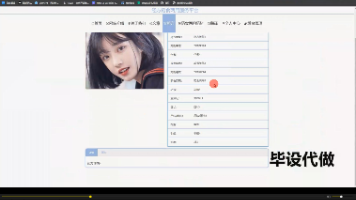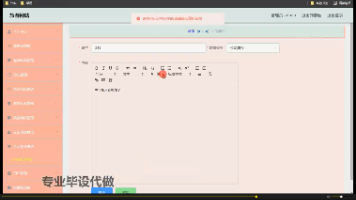【Mybatis】mapper.xml文件中SQL语句传入多个参数方法
#1#-> 适用于单个参数:接口文件:public void deleteData(int id) throws Exception;mapper.xml文件:#{}占位符对应传入的参数,可以随意写字符串标识符,但最好还是和传入参数对应起来,保持良好的可读性<delete id="deleteData" parameterType="int">de...
#1#-> 适用于单个参数:
接口文件:
public void deleteData(int id) throws Exception;mapper.xml文件:#{}占位符对应传入的参数,可以随意写字符串标识符,但最好还是和传入参数对应起来,保持良好的可读性
<delete id="deleteData" parameterType="int">
delete from Products where ProductID = #{id}
</delete>#2#-> 使用注解传递参数
接口文件:使用param注解参数
public ArrayList<DataBean> selectAll(@Param("DateString") String DateString, @Param("BranchNo") String BranchNo) throws Exception;mapper.xml
<select id="selectAll" resultMap="DataMap">
select * from townbranch where datetime = #{DateString} and branchno like #{BranchNo};
</select>这种方式只适合少数几个参数的情况,如果参数过多建议用Javabean
#3#-> 使用JavaBean传递参数
接口文件:
public int insertData(ProductsBean product) throws Exception;ProductsBean文件:
package com.mybatisdemo.beans;
public class ProductsBean {
private int ProductID;
private String ProductName;
private double Price;
private String ProductDescription;
public ProductsBean() {
super();
}
public ProductsBean(int productID, String productName, double price, String productDescription) {
ProductID = productID;
ProductName = productName;
Price = price;
ProductDescription = productDescription;
}
public ProductsBean(String productName, double price, String productDescription) {
ProductName = productName;
Price = price;
ProductDescription = productDescription;
}
public int getProductID() {
return ProductID;
}
public void setProductID(int productID) {
ProductID = productID;
}
public String getProductName() {
return ProductName;
}
public void setProductName(String productName) {
ProductName = productName;
}
public double getPrice() {
return Price;
}
public void setPrice(double price) {
Price = price;
}
public String getProductDescription() {
return ProductDescription;
}
public void setProductDescription(String productDescription) {
ProductDescription = productDescription;
}
@Override
public String toString() {
return "ProductsBean{" +
"ProductID=" + ProductID +
", ProductName='" + ProductName + '\'' +
", Price=" + Price +
", ProductDescription='" + ProductDescription + '\'' +
'}';
}
}
mapper.xml文件:
<insert id="insertData" keyProperty="ProductID">
insert into Products (ProductID, ProductName, Price, ProductDescription)
values (#{ProductID},#{ProductName},#{Price},#{ProductDescription})
</insert>【小结】
1. 如果只有单个参数,使用#{}占位符即可。
2. 如果多个参数可以使用Param注解传递参数。
3. 如果参数太多,可以使用JavaBean,#{key}的key对应Javabean的字段。
-------------------------------------------------------------------------------------------------------------------
#-> 占位符 # 和 $ 的区别
#{} 和 ${} 都可以替代参数,即占位符
#{} 在SQL语句运行的时候显示的是一个一个的 ? ? ?
例如针对根据某个ID的一条删除语句,ID号用 #{id} 替代
<delete id="deleteData" parameterType="int">
delete from Products where ProductID = #{id}
</delete>输出的SQL日志如下 :
Preparing: delete from Products where ProductID = ?
==> Parameters: 2(Integer)
<== Updates: 1
[Products] 已经删除第2条记录!#{ } 在处理接受的字段会当做字符串处理,会把传入的参数自动加上引号"",例如这里如果想要删掉 ID=2 的记录
当执行函数 deleteData(2)的时候,输出的SQL语句实际上是:
delete from Products where ProductID = "2"而 ${ } 不会自动添加引号"" ,就是简单的字符串拼接,容易引发SQL语句注入的安全隐患,所以一般还是推荐使用 #{ }.
更多推荐
 已为社区贡献5条内容
已为社区贡献5条内容









所有评论(0)